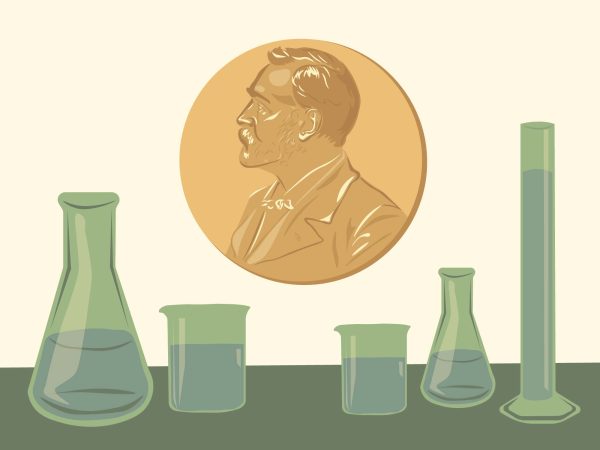It’s become a bit of a tradition for me to recap the Nobel Prizes in my column: In 2023, I covered Claudia Goldin’s work in economics, and in 2024, I broke down the impact of AI on the Nobel Prize in Chemistry.
This year, however, I want to focus more on overall trends within the scientific prizes rather than any individual award.

Yes, the Nobel Prizes are necessary awards for recognizing incredibly hard work in the scientific community, but they also are a great way to gauge what is important to the scientific community based on who is receiving the awards.
For instance, AI advancements played a significant role in dictating who won awards last year. Both physics and chemistry prizewinners incorporated elements of machine learning and computational work into their respective scientific discoveries.
The decision to keep AI at the forefront of these awards underscored the changing landscape of science amid new technologies.
This year was about playing the long game.
All awarded discoveries had one thing in common: They built on decades of work on foundational topics to reach their ultimate recognition.
Shimon Sagakuchi, joint winner for the physiology or medicine prize, already made groundbreaking discoveries for his work back in 1995 when he discovered a new type of immune cells.
Richard Robson, joint chemistry winner, has worked on molecular architecture since 1989 when he conducted experiments to make new, spacious crystals.
And finally, John Clarke, Michel H. Devoret and John M. Martinis — winners for this year’s prize in physics — were making their discoveries on quantum physics back in 1984.
This is a change from other previous award winners: For instance, Jennifer Doudna and Emmaneulle Charpentier developed CRISPR for gene editing in 2012 and won the Nobel Prize in Chemistry just eight years later in 2020.
David I. Kaiser, physicist at Massachusetts Institute of Technology, told The New York Times that for this year’s awards, “It’s not just that it took a long time between the efforts and the prize, but that the effort itself was intergenerational.”
The laureates, themselves, emphasize their disbelief that their long-term research could reap such benefits. Clarke commented that they had “no way of understanding the importance” of their discoveries since they “don’t know how it’s going to evolve, because other people will pick up on the idea and develop it.”
Other scientists in the field agree on the importance of foundational learning.
Annette Dolphin, a pharmacology professor at University College London and president of the Physiological Society, said the prize in physiology or medicine “is a striking example of how fundamental physiological research can have far-reaching implications for human health.”
Director of the Wisconsin Institute for Discovery Jo Handelsman echoed the sentiment, saying, “Basic research is where the big steps come from.”
Scientific research is currently facing huge budget cuts, threatening important discoveries across fields and disciplines. For example, the National Institutes of Health — one of the leading funders for biomedical research that directly contributes to pharmaceutical discoveries and drug developments — faces a whopping 40% budget cut for the 2026 fiscal year.
This year’s Nobel Prize winners emphasize that, sometimes, it isn’t about the most recent trends in a discipline — integrating flashy new discoveries into science can be beneficial, and of course, when we create new tools and technology, they should be utilized.
But a lot of groundbreaking work comes from the slog: putting in the work decade after decade, building off of other people and collaborating with researchers to discover fundamental truths about the natural world.
By cutting budgets and deprioritizing scientific research, we won’t just feel the repercussions now — it will be apparent for years and years to come.